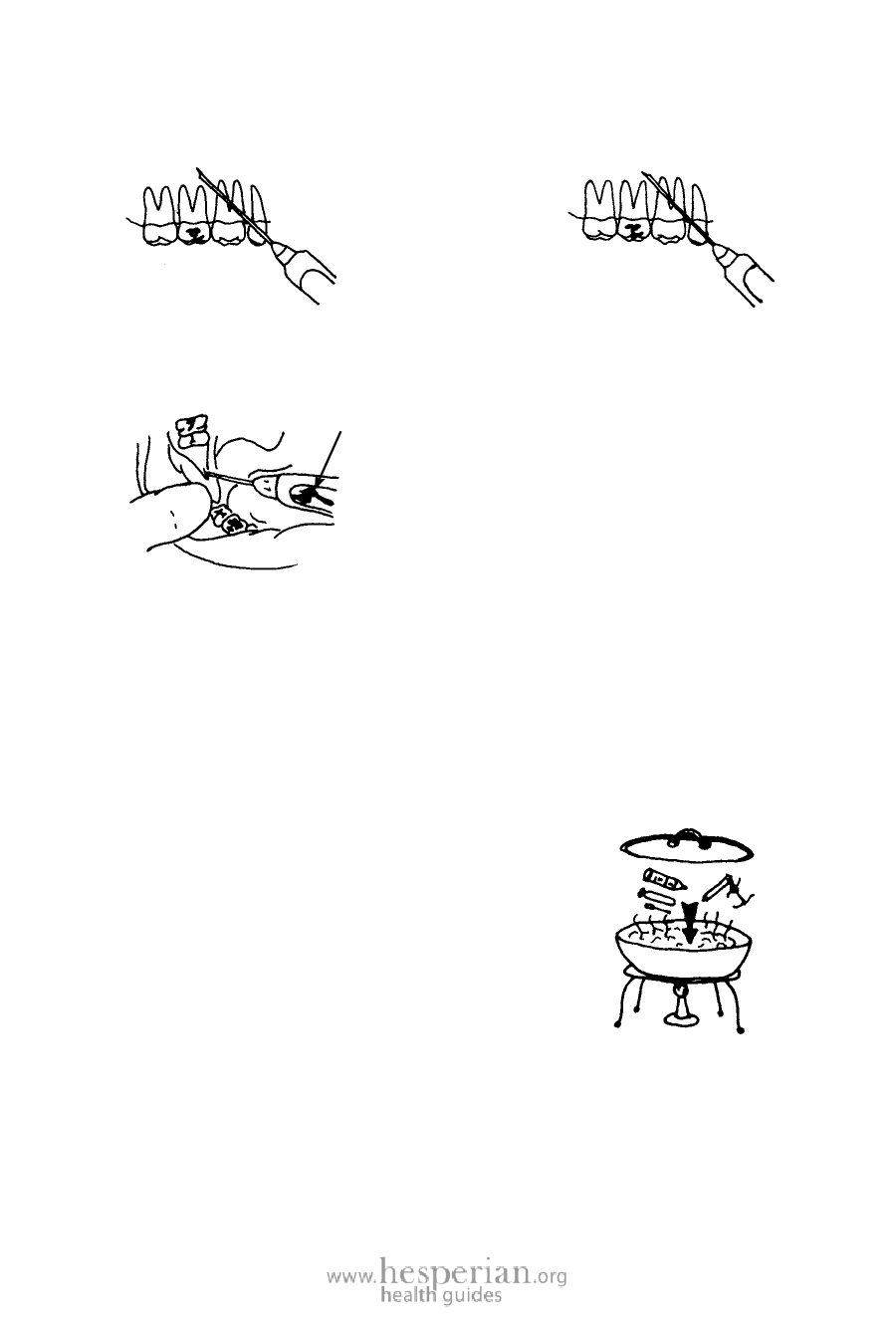
138 Where There Is No Dentist 2012
3. Before you push the needle under the skin, be sure its pointed end is
facing in the correct direction.
The local
anesthetic must
come out against
the bone, where
YES
the nerve is.
NO
4. Before you inject the local anesthetic, wait a moment to see if any
blood enters the syringe. (Note: only an aspirating syringe will do this.)
blood
Pull back on the plunger. If
blood comes inside, it means
you have poked a blood vessel.
Pull the needle part way out
and gently move it over to a
different place.
If you inject local anesthetic into the blood vessel, there will be more
swelling afterward, and the person may faint. If the person faints:
• Lie him on his back.
• Loosen his shirt collar.
• Lift his legs so they are higher than his head.
5. Be sure your syringe and needles are clean and sterile (see pages 86
to 91). Do not pass an infection from one person to another by using dirty
needles.
FOR GLASS SYRINGES:
Boil the syringe and needle in water (page 88)
for at least 30 minutes in a covered pot. It is
also a good practice to boil your metal syringe.
FOR METAL SYRINGES:
• Use a new cartridge for each person who
needs an injection. Do not use local anesthetic
from a cartridge that you have used on another person.
• Use each disposable needle only 1 time and then throw it away in
a box like the one on pages 205 to 206. If you must reuse a needle,
replace the cap very carefully and put the needle in a safe place (such
as a pan of bleach solution) until you are ready to clean and sterilize it
(see pages 87–88).